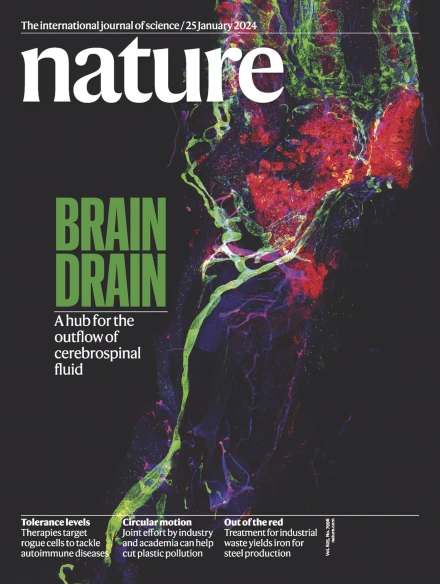π-HuB: the proteomic navigator of the human body
IF 48.5
1区 综合性期刊
Q1 MULTIDISCIPLINARY SCIENCES
引用次数: 0
Abstract
The human body contains trillions of cells, classified into specific cell types, with diverse morphologies and functions. In addition, cells of the same type can assume different states within an individual’s body during their lifetime. Understanding the complexities of the proteome in the context of a human organism and its many potential states is a necessary requirement to understanding human biology, but these complexities can neither be predicted from the genome, nor have they been systematically measurable with available technologies. Recent advances in proteomic technology and computational sciences now provide opportunities to investigate the intricate biology of the human body at unprecedented resolution and scale. Here we introduce a big-science endeavour called π-HuB (proteomic navigator of the human body). The aim of the π-HuB project is to (1) generate and harness multimodality proteomic datasets to enhance our understanding of human biology; (2) facilitate disease risk assessment and diagnosis; (3) uncover new drug targets; (4) optimize appropriate therapeutic strategies; and (5) enable intelligent healthcare, thereby ushering in a new era of proteomics-driven phronesis medicine. This ambitious mission will be implemented by an international collaborative force of multidisciplinary research teams worldwide across academic, industrial and government sectors. We introduce a major scientific endeavour called π-HuB (proteomic navigator of the human body), its aim being to generate and harness multimodality proteomic datasets to enhance our understanding of human biology.


π-HuB:人体蛋白质组导航仪
人体包含数万亿个细胞,这些细胞被分为不同的类型,具有不同的形态和功能。此外,同一类型的细胞在一个人的一生中可能会处于不同的状态。了解人类生物体中蛋白质组的复杂性及其许多潜在状态是理解人类生物学的必要条件,但这些复杂性既不能从基因组中预测,也不能用现有技术系统地测量。蛋白质组学技术和计算科学的最新进展为以前所未有的分辨率和规模研究人体复杂的生物学提供了机会。在这里,我们介绍一项名为π-HuB(人体蛋白质组导航仪)的大科学努力。π-HuB项目的目标是:(1)生成和利用多模态蛋白质组学数据集,以增强我们对人类生物学的理解;(2)便于疾病风险评估和诊断;(3)发现新的药物靶点;(4)优化合适的治疗策略;(5)实现智能医疗,从而开创蛋白质组学驱动的临床医学的新时代。这一雄心勃勃的任务将由全球学术、工业和政府部门的多学科研究团队组成的国际合作力量来实施。
本文章由计算机程序翻译,如有差异,请以英文原文为准。
求助全文
约1分钟内获得全文
求助全文
来源期刊

Nature
综合性期刊-综合性期刊
CiteScore
90.00
自引率
1.20%
发文量
3652
审稿时长
3 months
期刊介绍:
Nature is a prestigious international journal that publishes peer-reviewed research in various scientific and technological fields. The selection of articles is based on criteria such as originality, importance, interdisciplinary relevance, timeliness, accessibility, elegance, and surprising conclusions. In addition to showcasing significant scientific advances, Nature delivers rapid, authoritative, insightful news, and interpretation of current and upcoming trends impacting science, scientists, and the broader public. The journal serves a dual purpose: firstly, to promptly share noteworthy scientific advances and foster discussions among scientists, and secondly, to ensure the swift dissemination of scientific results globally, emphasizing their significance for knowledge, culture, and daily life.
 求助内容:
求助内容: 应助结果提醒方式:
应助结果提醒方式:


